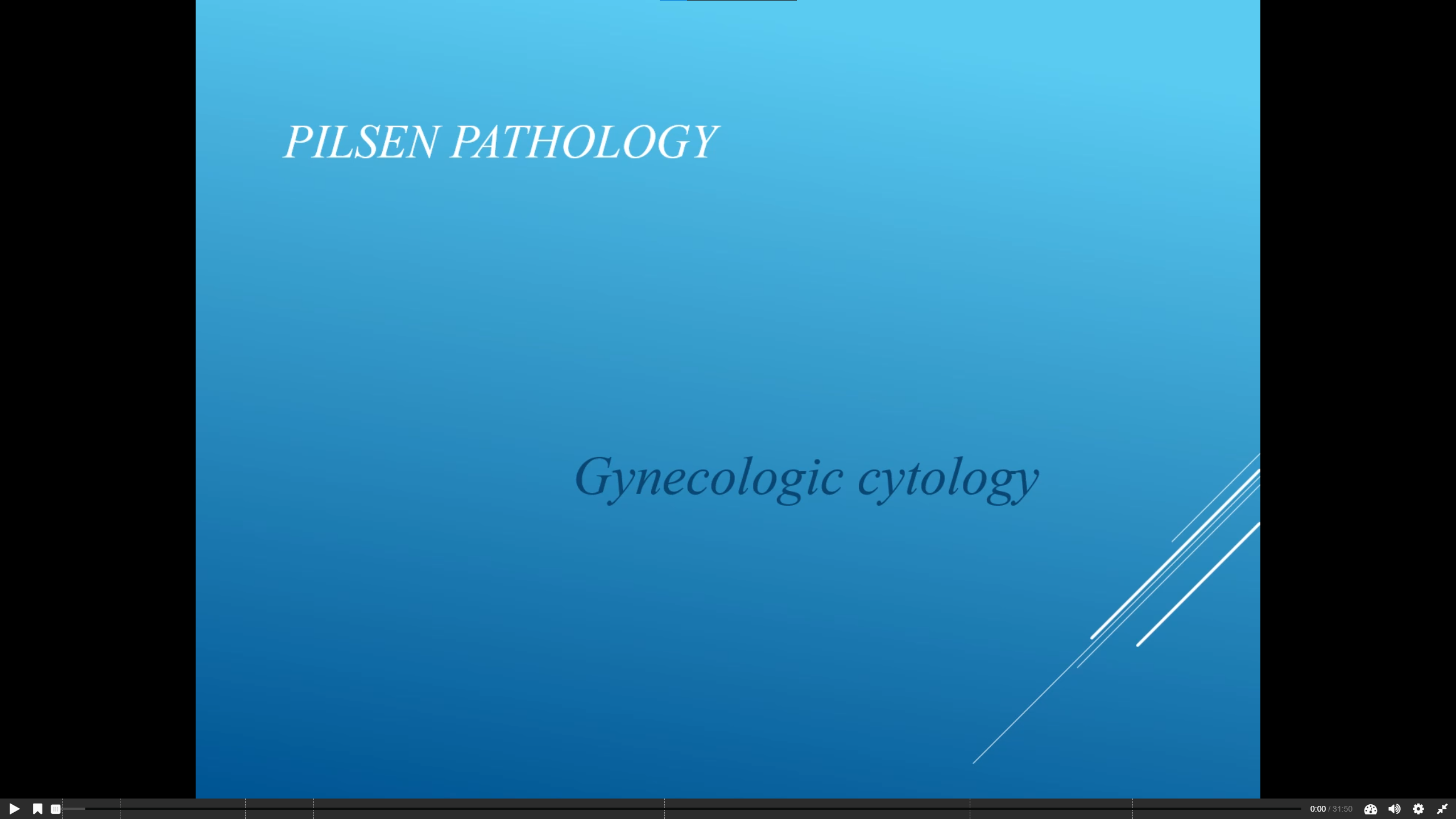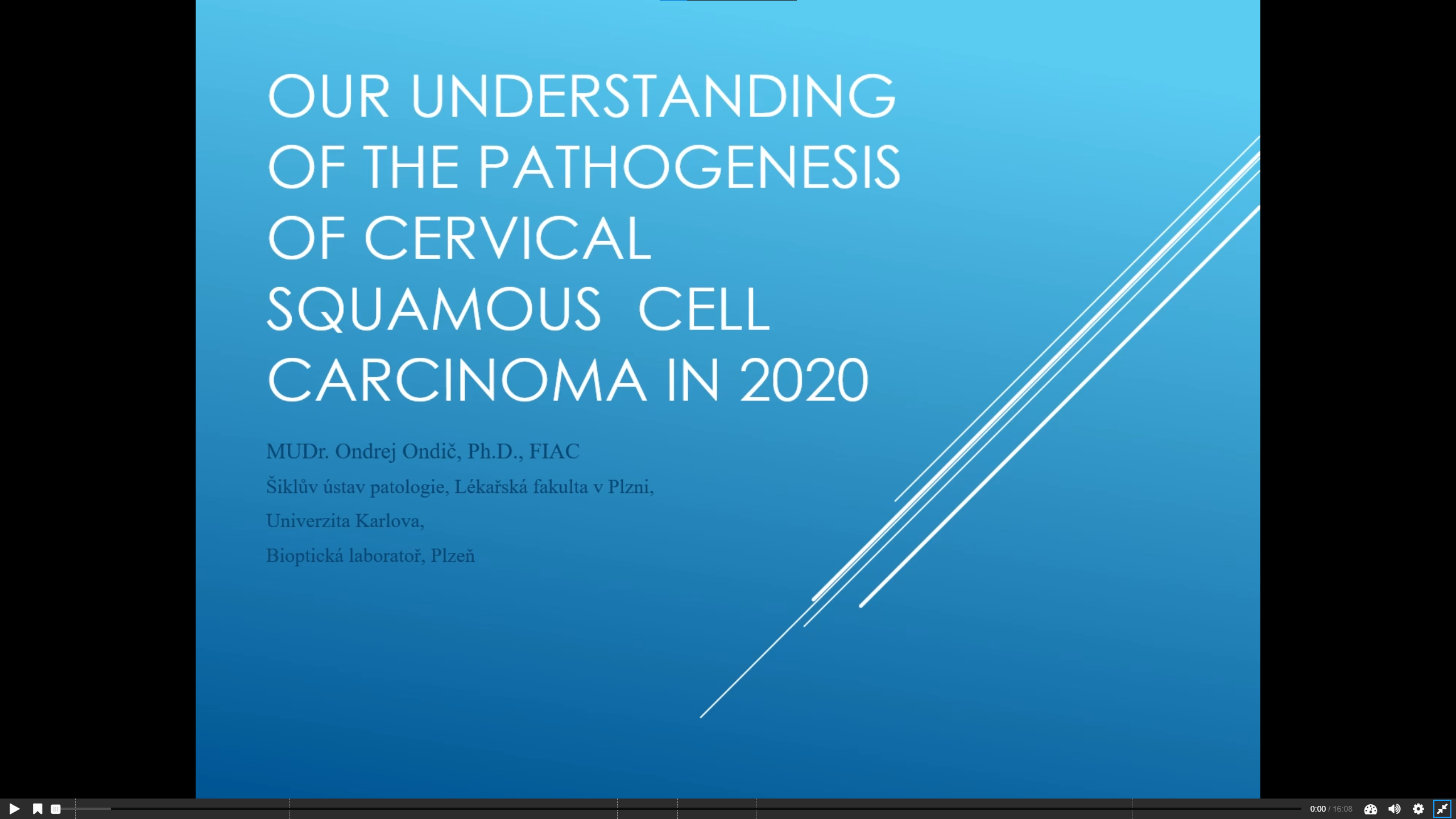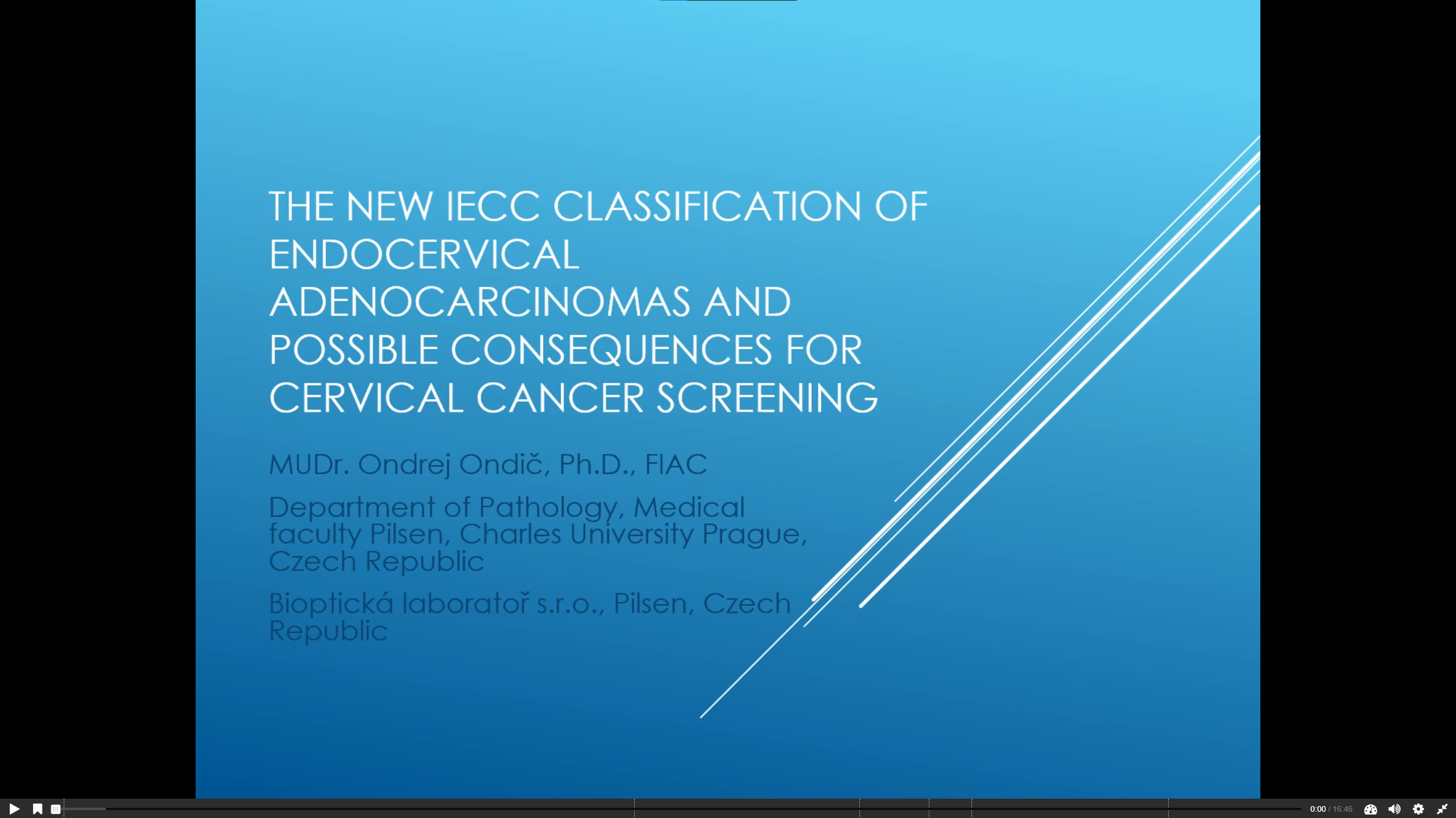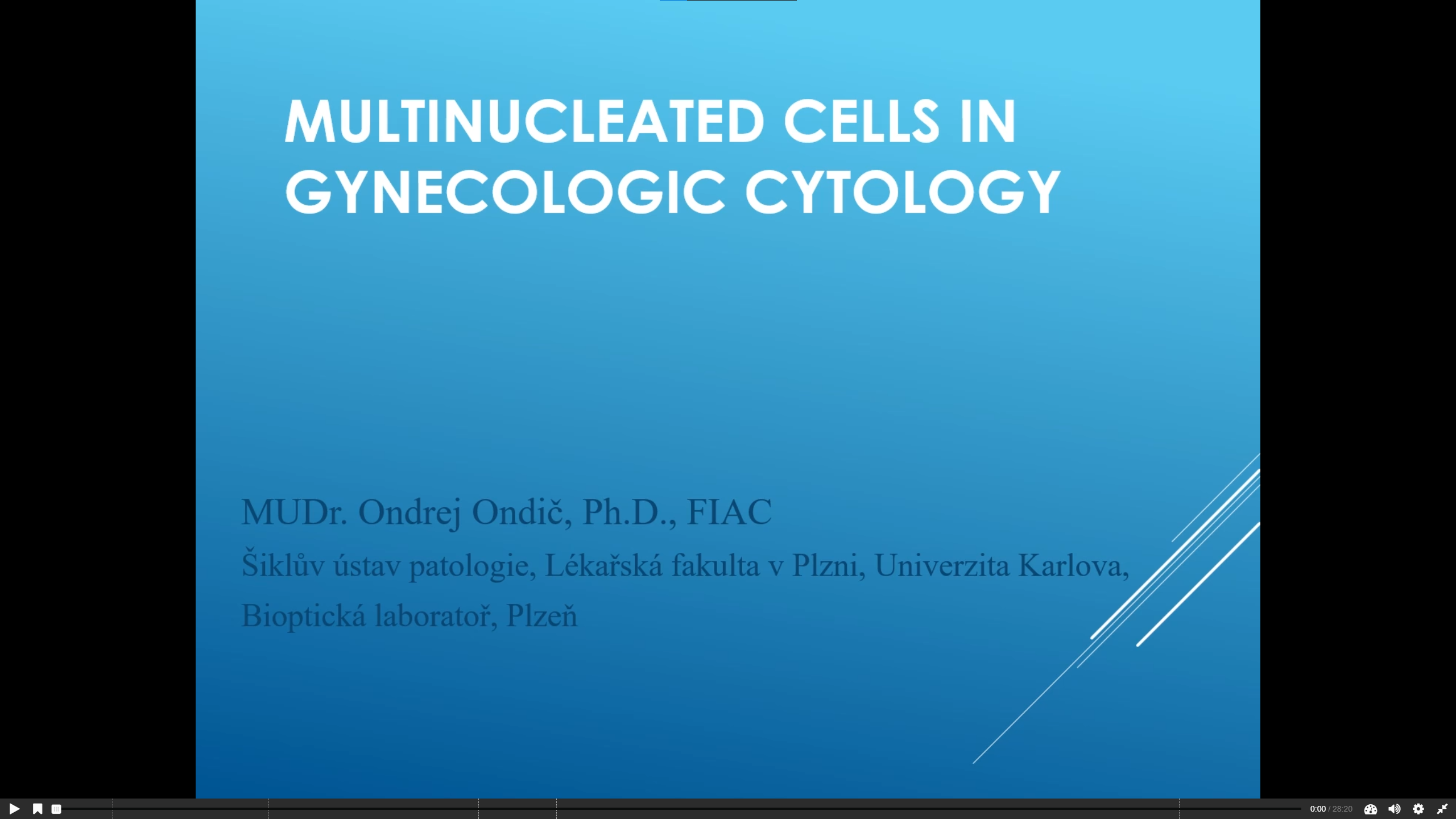Dr. Ondrej Ondič, Ph.D., FIAC is a practicing surgical pathologist in both private and academic pathology departments. He is a faculty member at Faculty of Medicine in Pilsen, Charles University, Prague, Czech Republic. His practice and research focus is primarily on gynecologic pathology including PAP smears. The private pathology laboratory – Biopticka Laboratory s.r.o, is one of the largest fully integrated biopsy-cytology-molecular pathology centers in Europe. Its yearly PAP smear volume is the largest in the world (with no available data from China).
https://www.biopticka.cz/en/laboratory/staff/ondic.php#
List of Publications:
1. The newly
proposed International Endocervical Adenocarcinoma Criteria and Classification
and its relevance to cervical cytology screening assessed in a prospective
2-year study of 118 cases.
Ondič O, Němcová
J, Alaghehbandan R, Černá K, Gomolčáková B, Kinkorová-Luňáčková I, Chytra J,
Šidlová H, Hósová M, Bouda J.
Cytopathology.
2020 Jul;31(4):288-291. doi: 10.1111/cyt.12831. Epub 2020 Jun 14.
PMID: 32289186
2. ZC3H7B-BCOR
high-grade endometrial stromal sarcoma may present as myoma nascens with
cytoplasmic signet ring cell change.
Ondič O,
Bednářová B, Ptáková N, Hájková V, Šteiner P, Šidlová H, Presl J, Bouda J,
Alaghehbandan R, Michal M.
Virchows Arch.
2020 Apr;476(4):615-619. doi: 10.1007/s00428-020-02744-5. Epub 2020 Jan 14.
PMID: 31938824
3. The detection of
DNA methylation of tumour suppressor genes in cervical high-grade squamous
intraepithelial lesion: A prospective cytological-histological correlation
study of 70 cases.
Ondič O, Němcová
J, Alaghehbandan R, Černá K, Gomolčáková B, Kinkorová-Luňáčková I, Chytra J,
Šidlová H, Májek O, Bouda J.
Cytopathology.
2019 Jul;30(4):426-431. doi: 10.1111/cyt.12718.
PMID: 31074057
4. On Histologic
Variability of HPV-associated Endocervical Adenocarcinomas.
Ondič O, Bouda J,
Němejcová K, Kajo K, Hegedüs L, Alaghehbandan R.
Am J Surg Pathol.
2019 Jun;43(6):863-865. doi: 10.1097/PAS.0000000000001259.
PMID: 30994536 No
abstract available.
5. Immunohistochemical
and selected genetic reflex testing of all uterine leiomyosarcomas and STUMPs
for ALK gene rearrangement may provide an effective screening tool in
identifying uterine ALK-rearranged mesenchymal tumors.
Ptáková N,
Miesbauerová M, Kosťun J, Grossmann P, Šidlová H, Pavelka J, Presl J,
Alaghehbandan R, Bouda J, Ondič O.
Virchows Arch.
2018 Nov;473(5):583-590. doi: 10.1007/s00428-018-2428-8. Epub 2018 Aug 16.
PMID: 30116888
6. Claudin-4
Expression is Associated With Survival in Ovarian Cancer But Not With
Chemotherapy Response.
Ondič O, Šidlová
H, Alaghehbandan R.
Int J Gynecol
Pathol. 2020 Jan;39(1):e1. doi: 10.1097/PGP.0000000000000517.
PMID: 29750704 No
abstract available.
7. Response to:
High-grade squamous intraepithelial lesion (HSIL) of the cervix with bizarre
cytological appearances ('pleomorphic HSIL').
Ondič O,
Alaghehbandan R.
Pathology. 2018
Apr;50(3):369-370. doi: 10.1016/j.pathol.2017.09.023. Epub 2018 Mar 1.
PMID: 29490871 No
abstract available.
8. Significance of
bizarre cells in cervical screening liquid-based cytology: A prospective study
of 15 cases.
Ondič O, Ferko R,
Kičinová J, Bouda J, Kinkorová-Luňáčková I, Kupcová L, Zůchová M, Chytra J,
Waloschek T, Tůmová Bartošková M, Alaghehbandan R, Němcová J.
Cytopathology.
2018 Feb;29(1):58-62. doi: 10.1111/cyt.12494. Epub 2017 Nov 20.
PMID: 29154448
9. Bizarre cell
dysplasia of the cervix.
Ondič O, Ferko R,
Kašpírková J, Švajdler M Jr, Rýchly B, Talarčík P, Bouda J, Michal M.
J Obstet Gynaecol
Res. 2017 Feb;43(2):345-351. doi: 10.1111/jog.13196.
PMID: 28150409
10. Fumarate
Hydratase-deficient Uterine Leiomyomas Occur in Both the Syndromic and Sporadic
Settings.
Harrison WJ,
Andrici J, Maclean F, Madadi-Ghahan R, Farzin M, Sioson L, Toon CW, Clarkson A,
Watson N, Pickett J, Field M, Crook A, Tucker K, Goodwin A, Anderson L,
Srinivasan B, Grossmann P, Martinek P, Ondič O, Hes O, Trpkov K, Clifton-Bligh
RJ, Dwight T, Gill AJ.
Am J Surg Pathol.
2016 May;40(5):599-607. doi: 10.1097/PAS.0000000000000573.
PMID: 26574848
Free PMC article.
11. Genetic testing
of leiomyoma tissue in women younger than 30 years old might provide an
effective screening approach for the hereditary leiomyomatosis and renal cell
cancer syndrome (HLRCC).
Martínek P,
Grossmann P, Hes O, Bouda J, Eret V, Frizzell N, Gill AJ, Ondič O.
Virchows Arch.
2015 Aug;467(2):185-91. doi: 10.1007/s00428-015-1783-y. Epub 2015 May 19.
PMID: 25985877
12. Oligodendroglioma
originating in mature cystic teratoma.
Bartakova A,
Ondic O, Presl J, Vlasak P, Bouda J.
J Obstet
Gynaecol. 2016;36(2):269-70. doi: 10.3109/01443615.2015.1049990. Epub 2015 Oct
14.
PMID: 26467502 No
abstract available.
13. Extraintestinal
oxyuriasis - report of three cases and review of literature.
Ondič O, Neubauer
L, Sosna B.
Cesk Patol. 2014
Jul;50(3):152-4.
PMID: 25186597
Review.
14. Eosinophilic
dysplasia of the cervix associated with HPV 6 infection - case report and
review of the literature.
Ondič O,
Kašpírková J, Ferko R.
Cesk Patol. 2013
Oct;49(4):146-8.
PMID: 24289485
Review.
15. HPV typing of
high-grade dysplasia (CIN III) in cone biopsies of 38 HPV-vaccinated women.
Ondič O,
Kašpírková J, Májek O, Kinkorová I.
Virchows Arch.
2014 Jan;464(1):79-83. doi: 10.1007/s00428-013-1511-4. Epub 2013 Nov 26.
PMID: 24276406
16. [The testing
strategy for detection of biologically relevant infection of human
papillomavirus in head and neck tumors for routine pathological analysis].
Kašpírková J,
Ondič O, Cerná K, Skálová A.
Cesk Patol. 2013
Jan;49(1):29-34.
PMID: 23432073
Czech.
17. Borderline
papillary serous tumor of the fimbriated end of the fallopian tube with
peritoneal implants.
Ondic O, Kalis V,
Sima R.
J Obstet Gynaecol
Res. 2011 Nov;37(11):1702-5. doi: 10.1111/j.1447-0756.2011.01556.x. Epub 2011
Jun 9.
PMID: 21651651
18. Morphological
variations of scar-related and spontaneous endometriosis of the skin and
superficial soft tissue: a study of 71 cases with emphasis on atypical features
and types of müllerian differentiations.
Kazakov DV, Ondic
O, Zamecnik M, Shelekhova KV, Mukensnabl P, Hes O, Dvorak V, Michal M.
J Am Acad
Dermatol. 2007 Jul;57(1):134-46. doi: 10.1016/j.jaad.2006.11.036.
PMID: 17572279
19. Inflammatory
myofibroblastic tumor of the uterus - case report.
Štiková Z,
Ptáková N, Horáková M, Kosťun J, Ondič O.
Cesk Patol. 2019
Fall;55(4):239-243.
PMID: 31842556
English.
20. Eosinophilic
dysplasia of the cervix associated with HPV 6 infection - case report and
review of the literature.
Ondič O,
Kašpírková J, Ferko R. Cesk Patol. 2013 Oct;49(4):146-8.
21. HPV typing of
high-grade dysplasia (CIN III) in cone biopsies of 38 HPV-vaccinated women.
Ondič O,
Kašpírková J, Májek O, Kinkorová I. Virchows Arch. 2014 Jan;464(1):79-83. doi:
10.1007/s00428-013-1511-4.
22. Bizarre cell
dysplasia of the cervix.
Ondič O, Ferko R,
Kašpírková J, Švajdler M Jr, Rýchly B, Talarčík P, Bouda J, Michal M. J Obstet
Gynaecol Res. 2017 Feb;43(2):345-351. doi: 10.1111/jog.13196.
23. Significance
of bizarre cells in cervical screening liquid-based cytology: A prospective
study of 15 cases.
Ondič O, Ferko R,
Kičinová J, Bouda J, Kinkorová-Luňáčková I, Kupcová L, Zůchová M, Chytra J,
Waloschek T, Tůmová Bartošková M, Alaghehbandan R, Němcová J. Cytopathology.
2018 Feb;29(1):58-62. doi: 10.1111/cyt.12494.
24. Response to:
High-grade squamous intraepithelial lesion (HSIL) of the cervix with bizarre
cytological appearances ('pleomorphic HSIL').
Ondič O,
Alaghehbandan R. Pathology. 2018 Apr;50(3):369-370. doi:
10.1016/j.pathol.2017.09.023. Epub 2018 Mar 1.
25. On Histologic
Variability of HPV-associated Endocervical Adenocarcinomas.
Ondič O, Bouda J,
Němejcová K, Kajo K, Hegedüs L, Alaghehbandan R. Am J Surg Pathol. 2019
Jun;43(6):863-865. doi: 10.1097/PAS.0000000000001259.
26. The detection
of DNA methylation of tumour suppressor genes in cervical high-grade squamous
intraepithelial lesion: A prospective cytological-histological correlation
study of 70 cases.
Ondič O, Němcová
J, Alaghehbandan R, Černá K, Gomolčáková B, Kinkorová-Luňáčková I, Chytra J,
Šidlová H, Májek O, Bouda J. Cytopathology. 2019 Jul;30(4):426-431. doi:
10.1111/cyt.12718.
27. The newly
proposed International Endocervical Adenocarcinoma Criteria and Classification
and its relevance to cervical cytology screening assessed in a prospective
2-year study of 118 cases.
Ondič O, Němcová
J, Alaghehbandan R, Černá K, Gomolčáková B, Kinkorová-Luňáčková I, Chytra J,
Šidlová H, Hósová M, Bouda J. Cytopathology. 2020 Jul;31(4):288-291. doi:
10.1111/cyt.12831. Epub 2020 Jun 14.



